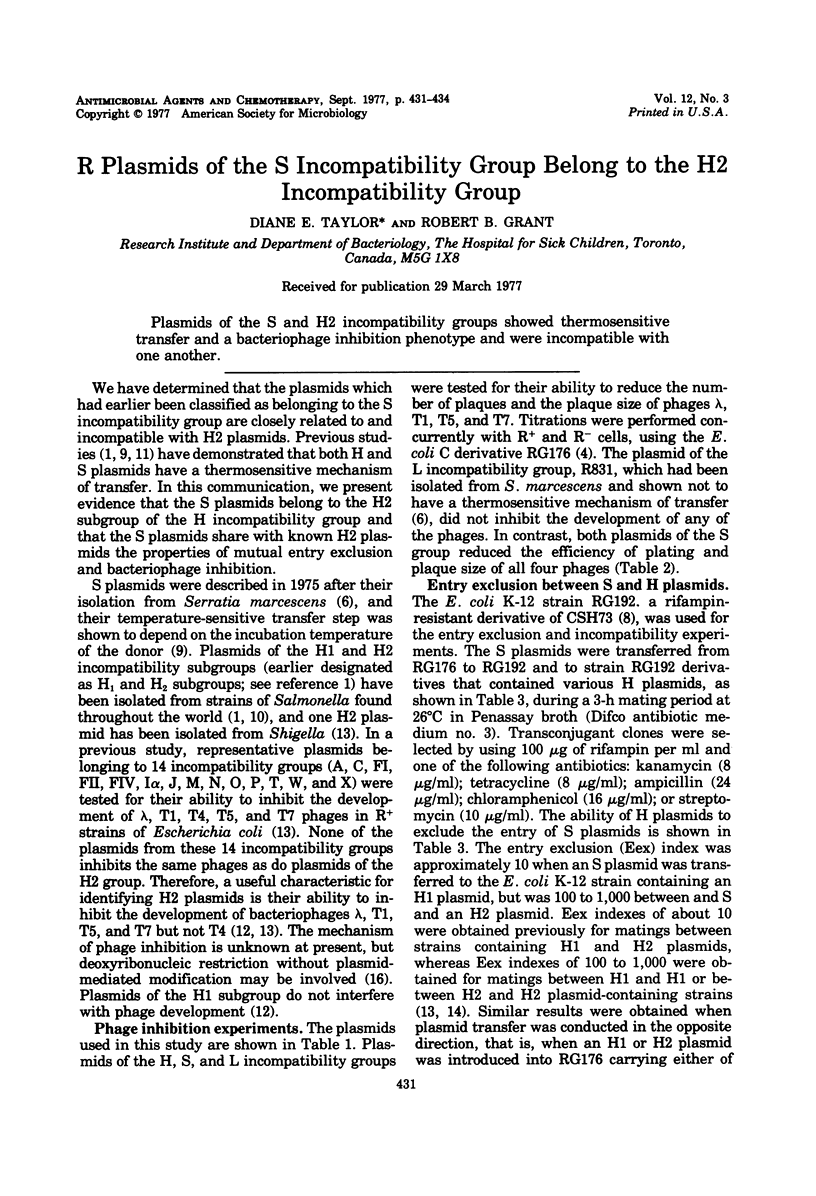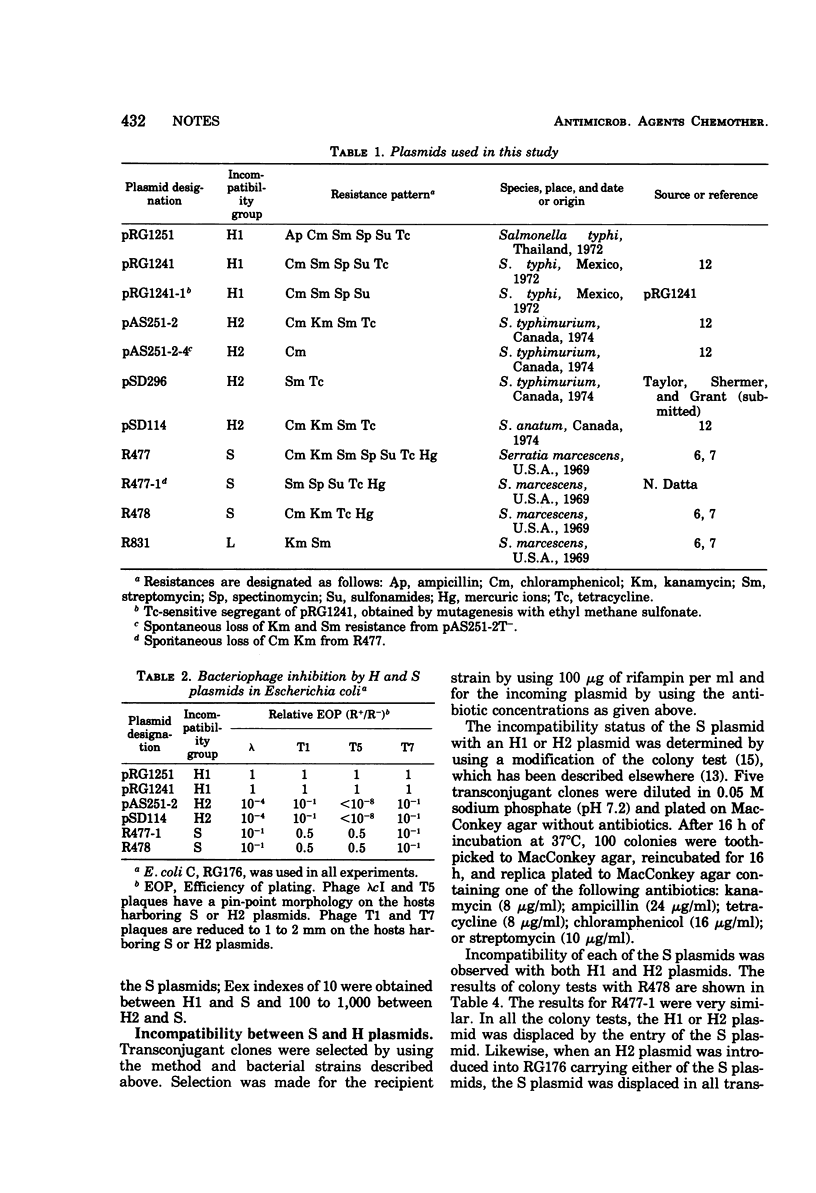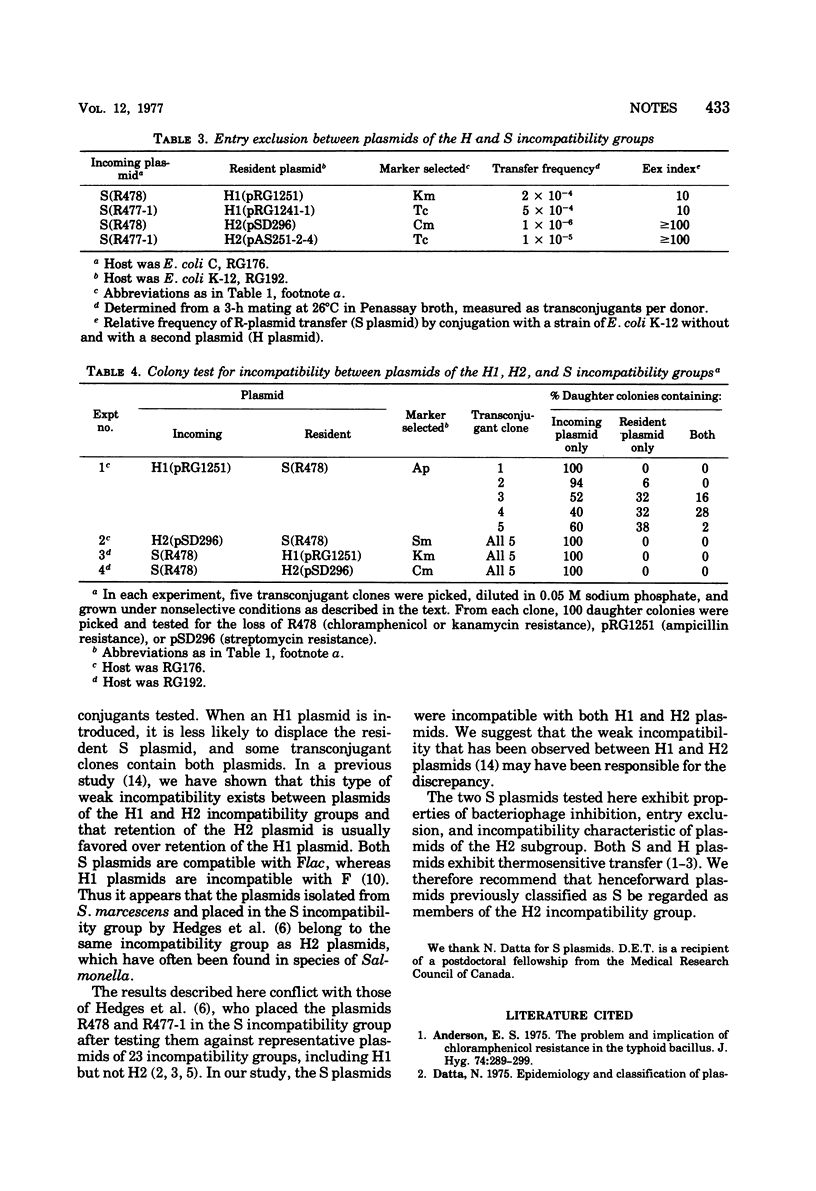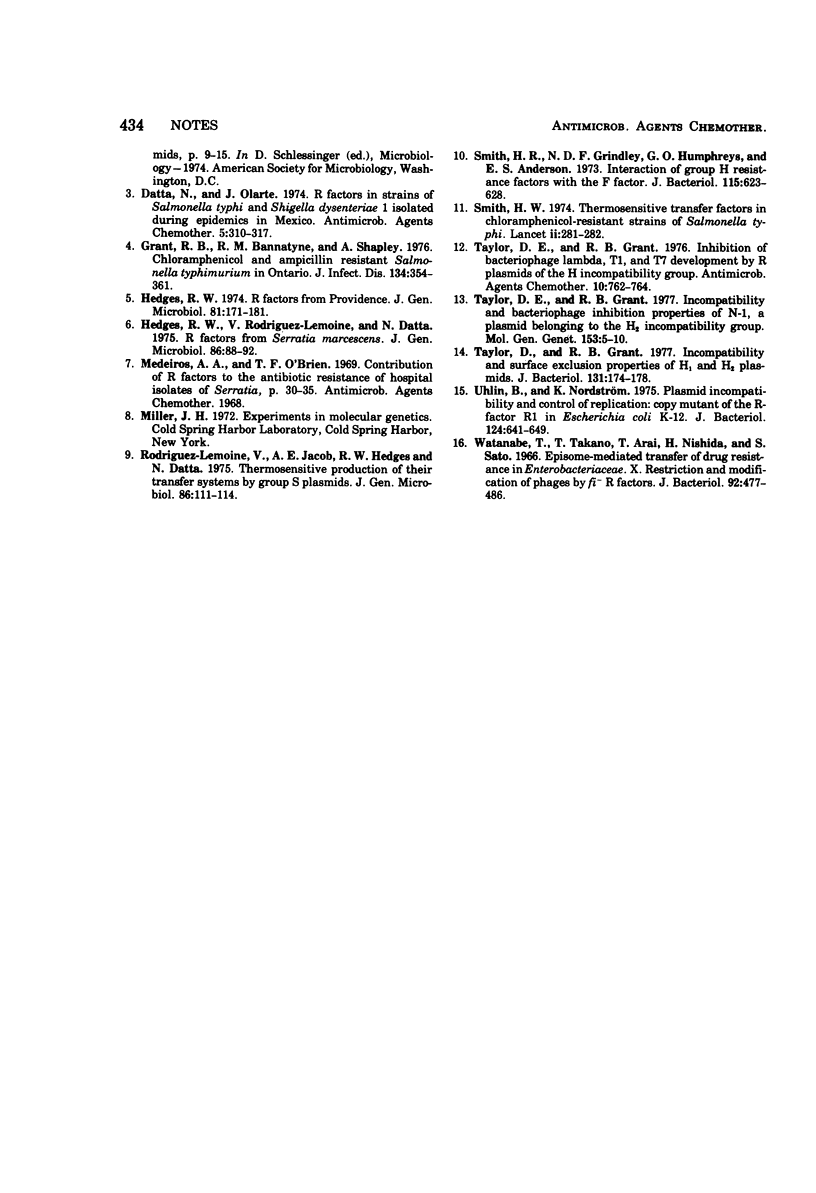Abstract
Plasmids of the S and H2 incompatibility groups showed thermosensitive transfer and a bacteriophage inhibition phenotype and were incompatible with one another.
Full text
PDF



Selected References
These references are in PubMed. This may not be the complete list of references from this article.
- Anderson E. S. The problem and implications of chloramphenicol resistance in the typhoid bacillus. J Hyg (Lond) 1975 Apr;74(2):289–299. doi: 10.1017/s0022172400024360. [DOI] [PMC free article] [PubMed] [Google Scholar]
- Datta N., Olarte J. R factors in strains of Salmonella typhi and Shigella dysenteriae 1 isolated during epidemics in Mexico: classification by compatibility. Antimicrob Agents Chemother. 1974 Mar;5(3):310–317. doi: 10.1128/aac.5.3.310. [DOI] [PMC free article] [PubMed] [Google Scholar]
- Grant R. B., Bannatyne R. M., Shapiey A. J. Resistance to chloramphenicol and ampicillin of Salmonella typhimurium in Ontario, Canada. J Infect Dis. 1976 Oct;134(4):354–361. doi: 10.1093/infdis/134.4.354. [DOI] [PubMed] [Google Scholar]
- Hedges R. W. R factors from Providence. J Gen Microbiol. 1974 Mar;81(1):171–181. doi: 10.1099/00221287-81-1-171. [DOI] [PubMed] [Google Scholar]
- Hedges R. W., Rodriguez-Lemoine V., Datta N. R factors from Serratia marcescens. J Gen Microbiol. 1975 Jan;86(1):88–92. doi: 10.1099/00221287-86-1-88. [DOI] [PubMed] [Google Scholar]
- Rodriguez-Lemoine V., Jacob A. E., Hedges R. W., Datta N. Thermosensitive production of their transfer systems by group S plasmids. J Gen Microbiol. 1975 Jan;86(1):111–114. doi: 10.1099/00221287-86-1-111. [DOI] [PubMed] [Google Scholar]
- Smith H. R., Grindley N. D., Humphreys G. O., Anderson E. S. Interactions of group H resistance factors with the F factor. J Bacteriol. 1973 Aug;115(2):623–628. doi: 10.1128/jb.115.2.623-628.1973. [DOI] [PMC free article] [PubMed] [Google Scholar]
- Smith H. W. Letter: Thermosensitive transfer factors in chloramphenicol-resistant strains of Salmonella typhi. Lancet. 1974 Aug 3;2(7875):281–282. doi: 10.1016/s0140-6736(74)91435-4. [DOI] [PubMed] [Google Scholar]
- Taylor D. E., Grant R. B. Incompatibility and bacteriophage inhibition properties of N-1, a plasmid belonging to the H2 incompatibility group. Mol Gen Genet. 1977 May 20;153(1):5–10. doi: 10.1007/BF01035990. [DOI] [PubMed] [Google Scholar]
- Taylor D. E., Grant R. B. Incompatibility and surface exclusion properties of H1 and H2 plasmids. J Bacteriol. 1977 Jul;131(1):174–178. doi: 10.1128/jb.131.1.174-178.1977. [DOI] [PMC free article] [PubMed] [Google Scholar]
- Taylor D. E., Grant R. B. Inhibition of bacteriophage lambda, T1, and T7 development by R plasmids of the H incompatibility group. Antimicrob Agents Chemother. 1976 Oct;10(4):762–764. doi: 10.1128/aac.10.4.762. [DOI] [PMC free article] [PubMed] [Google Scholar]
- Uhlin B. E., Nordström K. Plasmid incompatibility and control of replication: copy mutants of the R-factor R1 in Escherichia coli K-12. J Bacteriol. 1975 Nov;124(2):641–649. doi: 10.1128/jb.124.2.641-649.1975. [DOI] [PMC free article] [PubMed] [Google Scholar]
- Watanabe T., Takano T., Arai T., Nishida H., Sato S. Episome-mediated Transfer of Drug Resistance in Enterobacteriaceae X. Restriction and Modification of Phages by fi R Factors. J Bacteriol. 1966 Aug;92(2):477–486. doi: 10.1128/jb.92.2.477-486.1966. [DOI] [PMC free article] [PubMed] [Google Scholar]


